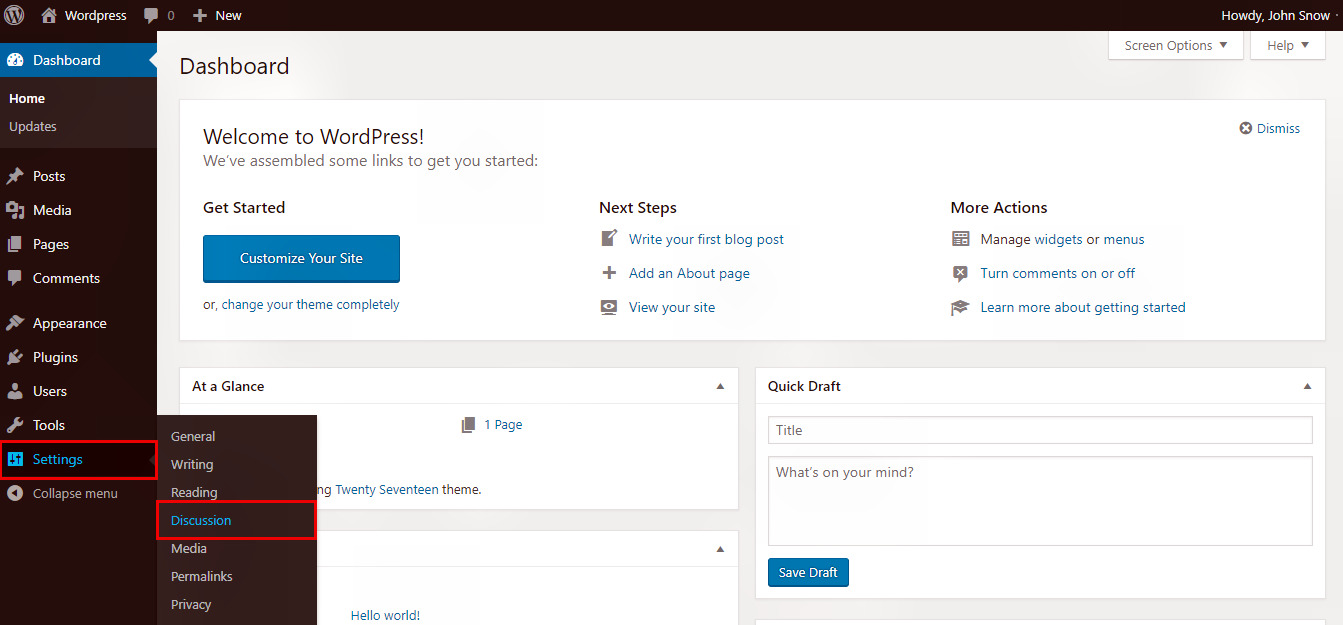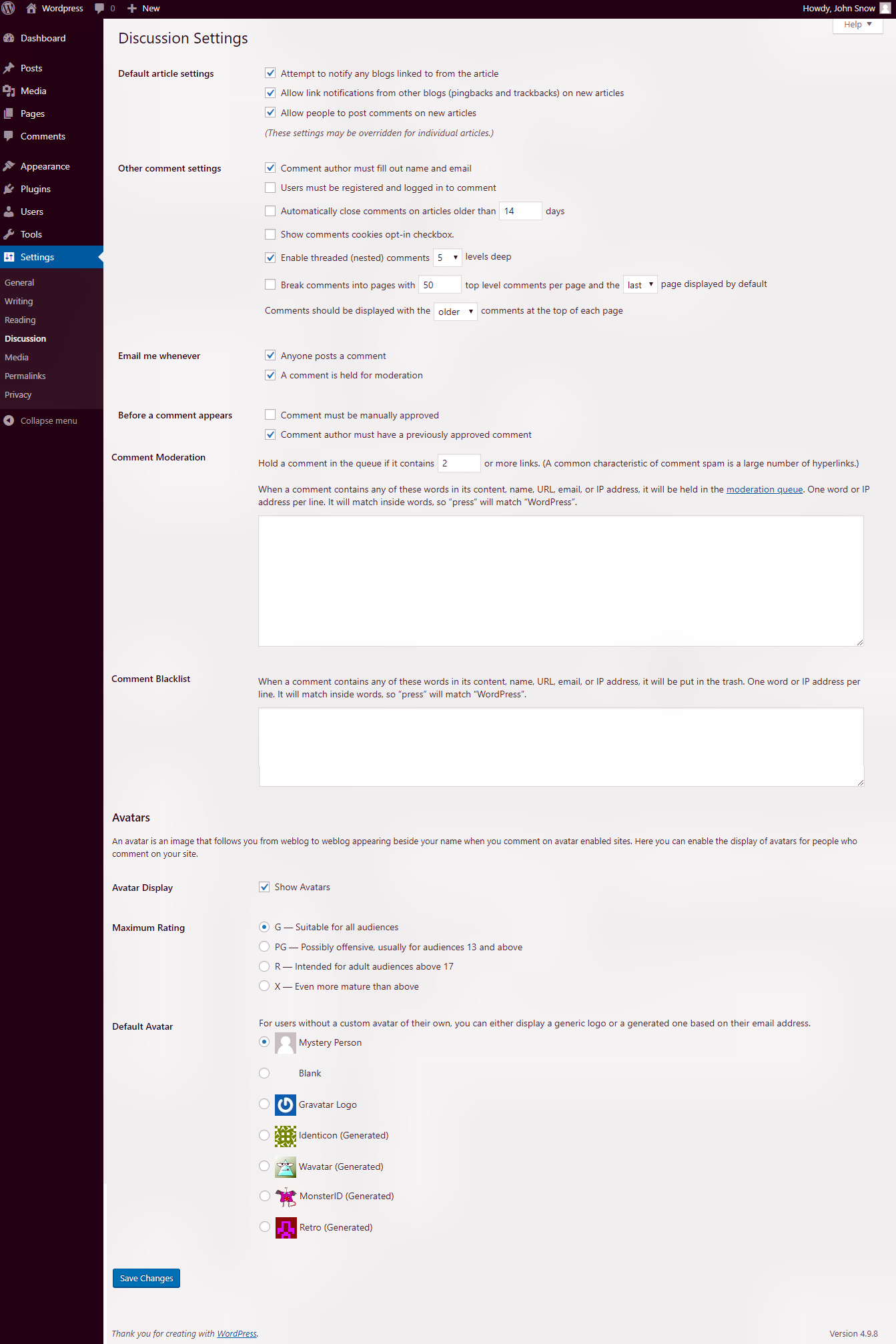Wordpress Discussion Settings
WordPress discussion setting defines how the interaction will happen between the blogger and the visitors.
Here admin defines some rules so that a user can reach to the blogger. These are very easy settings and one can
easily understand these just by reading. Although we have explained it for you, please continue reading.
Step 1 : − Click on Settings → Discussion option in WordPress.

Step 2 : − The Discussion Setting page is displayed like the snapshot below.

Following are the details of the fields of discussion settings.
Default article settings
Choose the set of rules you want by default a new page/post to follow. You can check/uncheck the settings like you want. These settings are -
- Attempt to notify any blogs linked to from the article: When you publish articles which mentions other blog's articles then it sends a notification (sends pings and trackback) to other blogs.
- Allow link notifications from other blogs (pingbacks and trackbacks) on new articles: Accepts pings from other blogs, if they have mentioned your blog's post.
- Allow people to post comments on new articles: You can allow or disallow other people to comment on your article. Uncheck this if you don't want to allow them to comment.
|
Other Comment Settings
This setting has the following options :
- Comment author must fill out name and email : Checking this will make it mandatory for the users to fill out their name and email before commenting.
- Users must be registered and logged in to comment: Checking this will only allow registered users to post comments. Unregistered users cannot comment.
- Automatically close comments on articles older than __ days: This option allows you to accept comments only for particular number of days as per your wish.
- Enable threaded (nested) comments: Checking this option will allow visitors to reply or to have a discussion and get responses. You can enter maximum number of nested comments you want in a thread.
- Break comments into pages with top level comments per page and the page displayed by default : It is a way to split comments in different number of pages if you are getting lot of comments.
- Comments should be displayed with the comments at the top of each page:You can arrange the comments in the form of ascending or descending order of posting time of the comments. You can select if you want to see older or newer comments first.
|
Email me whenever
You can specify the instances to get email notifications -
- Anyone posts a comment: You get an e-mail for every single comment that is posted.
- A comment is held for moderation: It is used in case when you don't want your comment to be updated before it's moderated by the admin.
|
Before a comment appears
These settings again provide some more restrictions on posting comments.
- Comment must be manually approved : After checking this, the posted comments will only be displayed if the admin approves them otherwise not.
- Comment author must have a previously approved comment: After checking this, a comment posted by any user will automatically gets approved if that user's e-mail matches the e-mail of any previously approved comment.
|
Comment Moderation
You can specify how many links a comment can hold. If any comment contains more than or equal to the specified number of links then it will get hold up in the queue for moderation. You can also specify some words which if found in a comment will send it to moderation queue.
Comment Blacklist
You can specify some words which if found in any comment, the comment will be deleted immediately.
Avatars
It is a just a small profile picture displays at the top-right-hand corner of the dashboard screen beside your name. You can set different avatars settings for your users-
- Avatar Display: Checking this will displays your avatar besides your name.
- Maximum rating: You have different options of avatars you can use. They are G, PG, R and X. This is the age section where you select according to which type of audience you want to display your posts.
- Default Avatar: If any user doesn't have any avatar, you can set a default avatar for them.
|
Step 3 : − Click on Save Changes button to save the changes.

